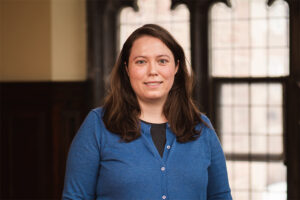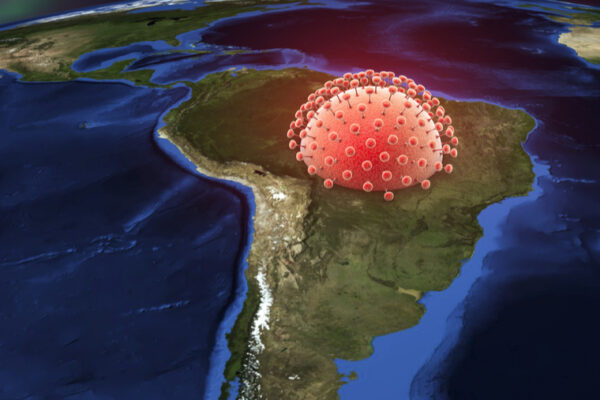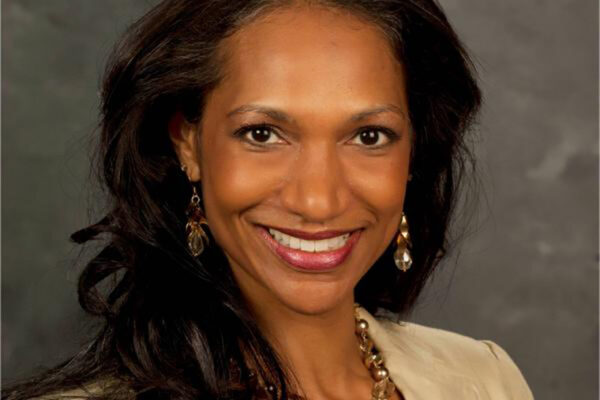Undergraduates in the Anthro 3280: “Anthropology of Infectious Diseases” course in Arts & Sciences presented their findings during a remote symposium held April 22. The event was the last gathering for Washington University in St. Louis students in a course that became far more consequential than anyone could have predicted.
“The pandemic is illuminating a lot of institutional and societal issues that have existed for years — or decades — but don’t normally get the limelight,” said Sumil Nair, a senior majoring in biology and anthropology, both in Arts & Sciences.

The class was developed and taught by Katharina Rynkiewich, a PhD graduate in sociocultural anthropology — who, interestingly, also defended her own dissertation about antimicrobial resistance via Zoom while the Washington University campus was closed in April. The class was initially intended to illuminate the process of looking back at disease — not so much staring down a present and a future that are uncertain and undocumented.
“Our class has taken an anthropological approach to understanding the COVID-19 pandemic,” Rynkiewich said. “A lot of the students are pre-med, and they haven’t necessarily approached this topic from an anthropological angle. We spent time discussing the benefits of doing qualitative work versus doing quantitative work and how it can be powerful to read a social angle.”
For the syllabus, Rynkiewich initially queued up a broad discussion of infections caused by different viruses and bacteria — but also fungi, protozoa and prion diseases.
Then she planned to focus on methods that anthropologists use to study these diseases.
A full-form ethnography, often requiring one year or more of careful data gathering, is a crucial tool for anthropologists in understanding infectious disease outbreaks. Rynkiewich’s list included such works on H1N1(bird flu) and China’s public health system after SARS, among others.
She also included works from Merrill Singer — a well-known medical anthropologist — who emphasizes how biology and the social can be combined in one disease experience, what he calls the “biosocial” conception of health.
But that was before COVID-19 wreaked havoc on daily life.
At some point, it became clear that the class could not wait for a definitive ethnography to be written.
“I remember so vividly in January and February, just talking about COVID-19,” said Soraya Moss, a senior majoring in computer science and minoring in anthropology. “It felt like an outsider perspective, like ‘Oh, it’s a problem that’s happening in China.’
“[We were] just sitting at the table having this conversation,” she added. “We had no idea what was going to happen. I remember thinking back to the Singer text and this idea of epidemics holding up a mirror to society.”
Kendra Lewis, a senior majoring in anthropology, was among several presenters who highlighted examples of racial and economic disparities that are impacting the spread and severity of the disease.
“A lot of the hospitals where there’s a large black population — where black people are highly concentrated — do not have the resources they need to handle the virus,” Lewis said.
“How we address the pandemic is going to really impact what we think about for our health in the future,” said Alec Hilton, a senior majoring in anthropology with a minor in sociology. “We are a very individualized society, and some other nations that have a more collective view of society have more robust health systems.
“Coming out of this, [whether] we choose to fall back on the individual health system, individual liberties — or go toward a more collective public health model — will definitely influence how the U.S. responds and is able to bounce back,” he said.
“Anthropology of Infectious Diseases” was a new course this year, and the anthropology department has not yet determined how it will be taught next year. Rynkiewich herself will be moving on to a new role as a postdoctoral scholar at Case Western Reserve University in the fall.
Across Arts & Sciences, courses in the humanities and the social and natural sciences are working to incorporate lessons from the COVID-19 pandemic into their teaching plans.
Already the biology department has announced that it will modify the fall 2020 section of Bio 4492: “Infectious Diseases: History, Pathology, and Prevention” — an upper level, writing intensive class — to focus on pandemic disease in general and SARS-CoV-2 (the virus that causes COVID-19) in particular. Another class geared toward first- and second-year students, EnSt 250: “One Health: Linking the Health of Humans, Animals, and the Environment,” includes a section on how land use change contributes to spillover events and emerging infectious diseases.
“Right now, there are a lot of unknowns,” Rynkiewich said. “These are areas anthropologists could help work through, because of our understanding of cultural differences in expertise and practice.”


